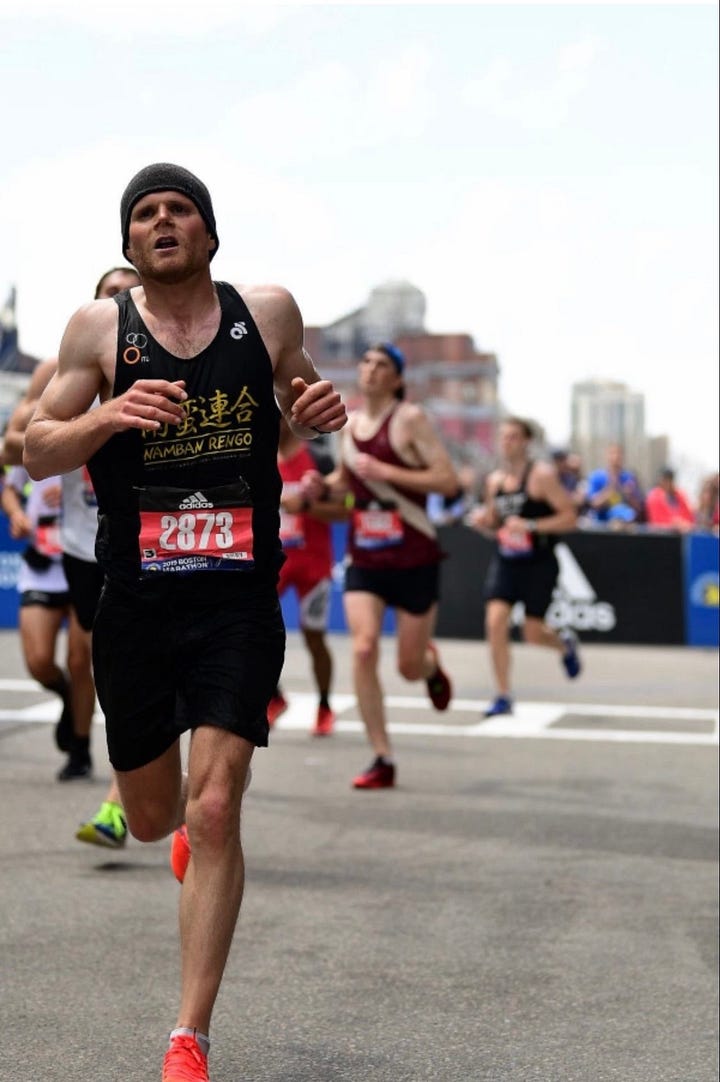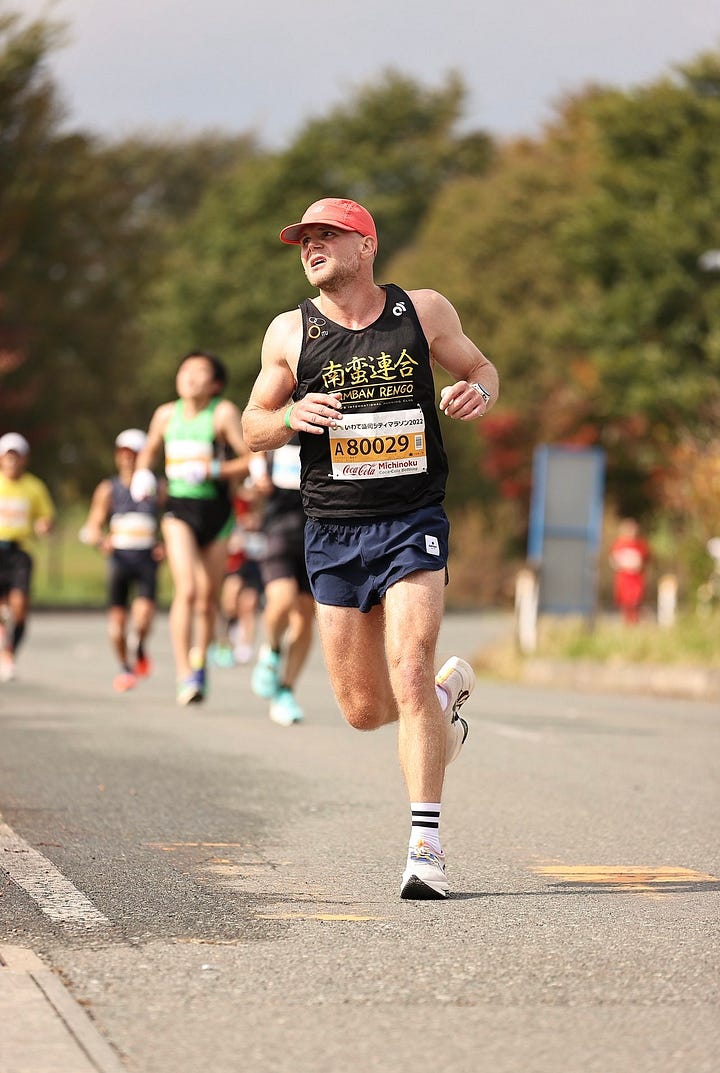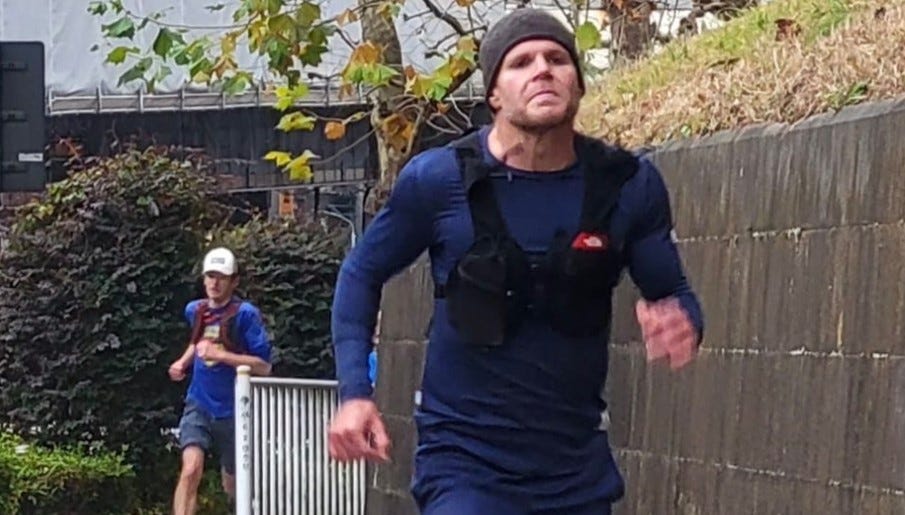How 'Mr Slow Easy Comfortable' runs slower and lifts weights to go faster
David Abbott uses his popular Twitter account to give hints and tips to help runners' get stronger, avoid injury and train smarter.
“People really want that message that it is OK to run slowly, that they have permission to enjoy their running.”
David Abbott is so convinced of the benefits of running slowly he has named his Twitter account ‘Mr Slow Easy Comfortable’.
The American, who lives in Tokyo, Japan, uses it to dispense nuggets of running gold, helping other runners get stronger, avoid injury and train smarter.
As well as running more slowly, David - who qualified for the Boston Marathon just a year after starting running seriously - extols the virtues of weight training.
He told Running Tales: “There’s no downside to getting strong, there are thousands of benefits.”
David only started running in 2016 when he was 35. During a visit to his native America, he attended a running club social event with his mum - “a big runner”.
He enjoyed it so much, he decided to join a running club in Tokyo.
“I didn’t really intend to be a runner, it was for the social side of things,” he said. “But once I started I got hooked.”
David said taking part in more organised training sessions, including intervals, saw his 5km time fall by around 90 seconds in a couple of months.
The following year - summer 2017 - he became “obsessed with running” after listening to a podcast which preached the benefits of running more slowly.
“I was so green, I didn’t know anything about running my first year. After my second marathon, I was upset, thinking I should be faster,” he said.
“After that I focussed on doing a lot of running, eight to 10 hours a week. I ran slowly almost every morning, for one to two hours.”
The change of plan worked and later that year he ran a sub-three hour marathon, qualifying for Boston Marathon in the process - an event he completed in 2019.
David, who has now run 10 marathons and an ultra, said: “I’d never imagined I would run any marathon, let alone Boston so that was probably the highlight.”
These days he coaches other runners in Japan and offers those vital tips on Twitter.
His Mr Slow Easy Comfortable moniker - he tweets under @runliftrunlift but includes the nom de plume alongside that handle - came after one early post showing him running at 80% capacity went viral.


“I didn’t realise how many people struggle with just slowing down and enjoying their running,” he said.
“I get so many replies from people saying thank you for telling them to slow down.”
David said doing long, slow runs is important to build a strong base: “Once you have a big base built up then you can add the speed on top of it.
“I use the analogy of a house. Your aerobic base is the foundation. That’s going to make you a faster runner alone.
“Then you put the speed work on top of that to get your best half-marathon or marathon time.”
He said runners should strive to achieve total aerobic development by doing everything from weekly intervals and tempo runs to putting in marathon pace sections in long runs.
“The art of training is figuring out when to do the faster running intensity and how much to do as your race approaches,” he said.
“A lot of runners do too much before they need it and that leads to injury and over-training.”
Also on Running Tales:
Super Mario - The Ironman who always finishes with a smile on his face
Running to make a difference: How charity and runners go hand-in-hand
As well as running slowly, David is also a keen advocate of weight lifting and strength training.
He said some runners can be put off as they see weight lifting as simply building muscle and cannot always see how that is beneficial to running.
But, he added, strength training is good for everything from bones, tendons and ligaments, and will result in improved running economy and increased metabolism.
“Weight lifting is the number one exercise modality in the world because everyone can benefit from getting stronger.,” he said.
“Not everyone can run, some people should be walking to start out or they have injuries but everyone can benefit from getting stronger.
“When you build a strength base through weight lifting that allows you to take more stress on your body through increases in mileage.
“One of the reasons I was able to improve a lot in a short period of time was because I had been lifting weights for years before. My body was ready to do those high mileage weeks.
“If people don’t have that strength base that is where their body breaks down and they get injured.”

Some runners are put off by the idea of becoming a bodybuilder when what they actually want to do is run.
But David said a lot of runners are open to strength training, and that the bigger issue is a lack of confidence.
“People know it will benefit them, but they just don’t know exactly where to start,” he said.
“The most important thing for a runner is having a strong posterior chain - basically your back, your glutes, your hamstrings. That is where a lot of runners are weak.
“A lot of runners get injuries because they have weak glutes or hamstrings, and that causes tight hip flexors.
“Running is a stressful activity. It is repetitive stress and it exposes your weaknesses. If you have tight hip flexors, running will show you that. Strength training is an anecdote to weakness.
“There are a lot of benefits to stretching and foam rolling, but it doesn’t address the problem. Strength training does.
“A lot of times when you have a weak or tight muscle it is something that can be fixed just through targeted strength training.”
David said new runners should start with a base in strength training - and that big gains can be made quickly.
“Your body will adapt to some new stimulus,” he said. “If you have never lifted weights before, you are going to gain so much muscle and strength in your first year of doing it.
“It really is worth the investment of time. Even in three months you will see noticeable progress.”





